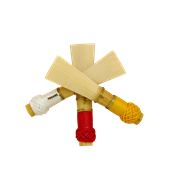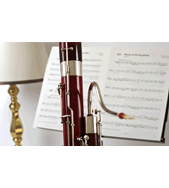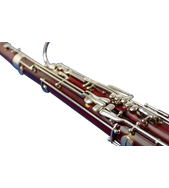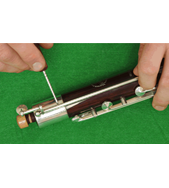Bassoon photography - does the camera ever lie?
February 28th, 2022

Bassoon photography - does the camera ever lie?
Being able to see clearly what each of the bassoons on our website looks like – the keywork it has and the bassoon’s condition – is important. Our customers are spread out all over the UK and internationally so clear, well-lit, beautifully-taken and honest photographs of our bassoons matter to them.
A decision to try a particular bassoon using our Try Before You Buy service should be made with confidence, in the knowledge that the bassoon booked on trial actually looks like the bassoon which arrives!
Good quality photography of high value bassoons for sale should perhaps be expected. But we have long found that others worldwide ignore this. Photographs can be in shadow, with gloomy, blurred pictures taken at bad angles: you can never be sure of what you will get when the bassoon arrives, potentially resulting in nasty surprises.
Here are some of the things we do to ensure you see our bassoons as accurately as possible on our website, and we hope you gain an insight into the lengths we go in order to bring you bassoons in perfect visual clarity. It is not as easy as it may appear…
Zooming into the detail
The first problem to solve is the size of the images on our website. To help with this we provide a zoom feature so you can closely examine each area of the bassoon, whether you use a smartphone, tablet or PC. We also use high resolution images to preserve the detail when you zoom in close. A small lens aperture is also necessary to make sure that the whole bassoon is always in focus.
Capturing the darks and lights
The second problem is that bassoons tend to be made up of dark joints, often near-black or very dark brown/red, and very shiny (i.e. near-white) keywork. Camera technology is not capable of capturing detail in both very dark areas and very light areas at the same time. To outwit the limitations of the technology we employ a few techniques:
- We use a camera with a high dynamic range (that is, one which is better than usual at capturing dark and light details)
- We use the high dynamic range setting on the camera. This actually takes three pictures one after the other automatically and then merges them together – one is under-exposed so it keeps the detail of the bright keywork, one is over-exposed so it keeps the detail of the bassoon’s dark joints and the third one is just right
- We use as big a light source as possible and surround the bassoon with reflective panels so that the dark shadows are lightened
Of course, as the camera takes three pictures in succession we have to use a sturdy tripod and remote triggering of the camera to avoid movement. Remote triggering also helps avoid the photographer’s face being reflected in the keywork, as has been known to happen.
Natural is best
The third problem is that every bassoon is a different tone, or rather, set of tones if you include the tiger stripes found on many bassoons and the variations seen in different areas of a typical bassoon. It is important to capture the subtle variations in colour and bring out the full beauty of each bassoon on the website.
For this reason we use daylight rather than flash or lamps, which can be overly harsh and unnatural. (We take all our photos under a large Velux window for maximum light ingress – this can sometimes be seen in the reflective keywork.)
Unfortunately, however, daylight does change in colour balance throughout the day (more red at the beginning and end of the day, more blue in the middle) and also changes depending on whether it is a cloudy or sunny day.
This is particularly important with capturing bassoons because even a small change in colour balance towards red can bring out the red in a bassoon (at the extreme, a mildly-tinted red varnish can appear eye-poppingly bright red). So we take all our photos in the middle of the day and adjust for the red in the bassoon on the computer afterwards, so that the image matches the real bassoon.
It is important to show the bassoon itself without it having to compete with a distracting background diverting the eye away from the bassoon. We have experimented with all sorts of backgrounds over the years but have settled on a plain white as it works well with all colours of bassoon.
Our biggest trade secret – Lego!
We thought we would let you into our biggest trade secret – how we prop the bassoon joints up so that they are presented square on to the camera in exactly the same position every time. We use Lego blocks of differing sizes to obtain the right angles and heights every time regardless of the differences between bassoons. The outside joints are also angled inwards slightly so that they are all facing the camera straight-on.
Finally, because photos straight from the camera aren’t always perfect, we put the photos onto a large computer monitor and use Photoshop to compare what is on the screen with the real bassoon, and adjust the photos so they match as closely as possible.
Then the photos are uploaded to our website.
This attention to detail also means that we have good quality photos of every bassoon we have ever sold – useful if you ever want to trade in your bassoon or have the keywork modified, because we immediately have something to refer to.
What you see is what you get?
Hopefully all our efforts mean that when you receive your trial bassoon from us there will be no unpleasant surprises: what you have in your hands matches what you saw on our website.
Demonstrating that, at least in the case or our bassoons, the camera never lies.




